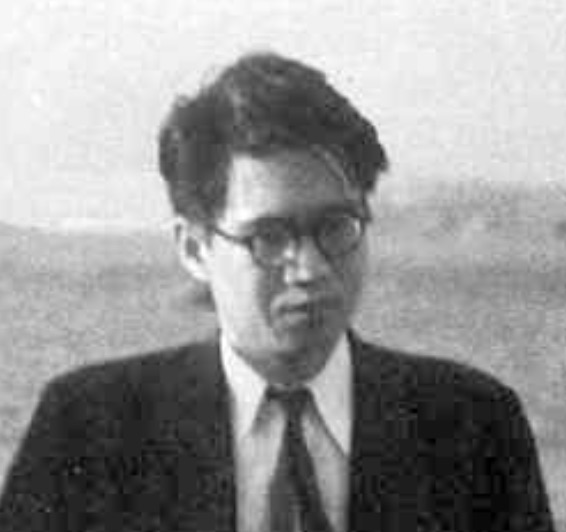
Yutaka Taniyama was a Japanese mathematician born on November 12, 1927, in Kisai, Saitama, Japan, about 30 miles north of Tokyo. Yutaka seven siblings, consisting of 3 brothers and 4 sisters. When was in high school, he contracted tuberculosis, causing him to miss two years of high school. On graduation, he enrolled at the University of Tokyo, majoring in mathematics. During his undergraduate years, he studied algebraic number theory, from several of André Weil’s books, including the classic Foundations of Algebraic Geometry.
In March 1953, Yutaka completed his undergraduate degree and remained at the University of Tokyo as a special research student in the Department of Mathematics, where he continued his research in number theory without a thesis advisor. In a biographical article written by G. Shimura and quoted in Mac Tutor, Yutaka live a Spartan type of existence during his postgraduate years. Shimura writes:
… he lived in a one-room apartment which consisted of 81 square feet of living space, a sink, and a tiny unfloored part behind the door. Running water, gas and electricity were provided separately in each room, but there was only one toilet on each floor of the two-storey building, shared by all the occupants of the dozen or so rooms of the floor. I remember that his was No. 20 on the second floor, close to the last. Thus it was more like a dormitory than an apartment, but it was more or less typical of the time. To take a bath, he had to go to a public bathhouse, a few minutes’ walk from his apartment. The building, a rather shabby wooden structure, was named poetically ‘Villa Tranquil Mountains’,
At a symposium in Japan in 1955, Yutaka had the opportunity to meet André Weil, the man whose books had taught him the foundations of algebraic number theory. In the proceedings of that conference, he published a paper titled, Jacobian Varieties and Number Fields. He followed this in 1956 with a paper titled, L-functions of Number Fields and Zeta functions of Abelian Varieties.,that was given a strong positive endorsement by André Weil.
One of his most famous achievements is the Taniyama-Shimura-Weil conjecture, proposed in collaboration with Goro Shimura. This conjecture suggested a deep connection between elliptic curves and modular forms, two seemingly unrelated areas in mathematics. This conjecture gained prominence because it would later play a crucial role in Andrew Wiles’ proof of Fermat’s Last Theorem in 1995.
In November 1957, Yutaka Taniyama, met Misako Suzuki, with whom he developed a romantic relationship. Within a few months, they decided to marry and Taniyama signed a lease on an apartment where they would live together after their wedding. Taniyama was offered a position at the Institute for Advanced Study in Princeton and his future looked bright. Then on November 17, 1958, barely a year after meeting Misako, Taniyama, at the age of 31, took his own life.
In his suicide note he wrote:
Until yesterday I have had no definite intention of killing myself. But more than a few must have noticed I have been tired both physically and mentally. As to the cause of my suicide, I don’t quite understand it myself, but it is not the result of a particular incident, nor of a specific matter. Merely may I say, I am in the frame of mind that I lost confidence in my future. There may be some to whom my suicide will be troubling or a blow to a certain degree. I sincerely hope that this incident will cast no dark shadow over the future of that person. At any rate I cannot deny that this is a kind of betrayal, but please excuse it as my last act in my own way, as I have been doing all my life.
A month later, his fiancé, Misako, committed suicide stating in her suicide note, “We promised each other that no matter where we went, we would never be separated. Now that he is gone, I must go too in order to join him.”
Despite his relatively brief career, Yutaka Taniyama’s work left a lasting impact on mathematics, and the Taniyama-Shimura-Weil conjecture became one of the cornerstones of modern number theory. In recognition of his contributions, the conjecture, now proved, is often referred to as the Taniyama-Shimura-Weil theorem.
